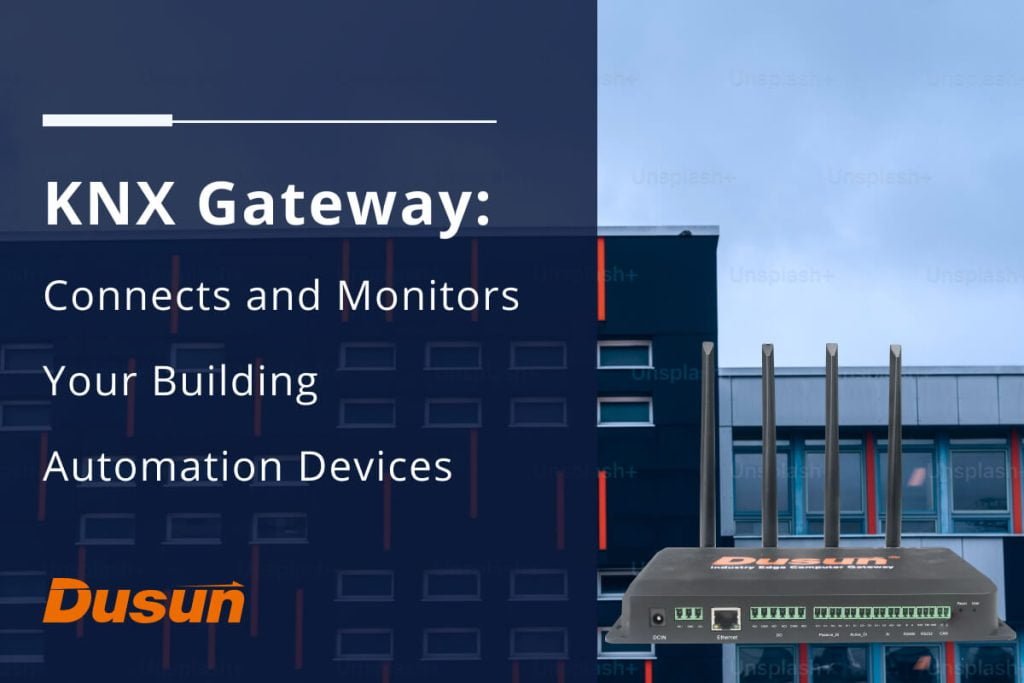KNX Gateways provide a uniform platform for integrating various devices and systems within a building, enabling efficient control, monitoring, and automation of different functions. This article provides an overview of the KNX gateway and KNX communication protocol, its applications in building automation, and the role of KNX gateways in integrating KNX systems with other technologies or protocols.
What is KNX Gateway?
A KNX Gateway is a device that enables communication and integration between KNX systems and other technologies or protocols. It acts as a bridge, facilitating interoperability and data exchange between KNX devices and devices using different communication standards.

How KNX Gateways Bridge the Gap?
KNX Gateways enable bi-directional communication between KNX systems and other technologies. Below is a brief explanation of how KNX gateways help bridge the gap.
- Protocol Translation: KNX devices communicate with the help of KNX telegrams on the bus. For a non-KNX system, such as Modbus, or BACnet,, the KNX gateway translates its commands and data into KNX telegrams to allow integration between KNX and non-KNX devices.
- Interfacing with Different Technologies: KNX gateways enable integration with various technologies, including IP-based networks, wireless technologies like KNX RF or EnOcean, or industrial automation systems using programmable logic controllers (PLCs).
- Integration with IP Networks: Many KNX gateways convert KNX telegrams into IP packets and vice versa, enabling communication over the internet or local network. This integration allows users to remotely access and control KNX devices from anywhere, using smartphones, tablets, or web-based interfaces. It bridges the gap between the local KNX bus and remote access or cloud-based services.
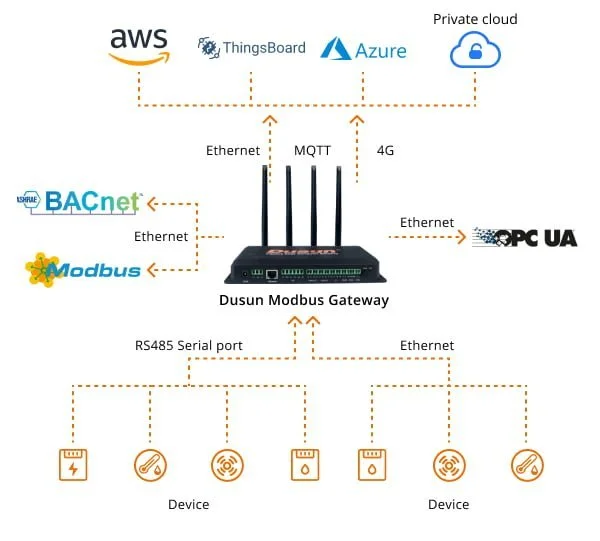
KNX gateways bridge the gap between the KNX system and other automation systems or protocols by translating communication protocols, interfacing with different technologies, performing data mapping and interpretation, integrating with IP networks, and enabling cross-system control and automation.
KNX Gateway Working Principle
The KNX Gateway translates and converts signals and protocols between the KNX protocol and the target protocol or technology. It receives commands, data, or events from the KNX system and translates them into the appropriate format understood by the target system. Similarly, it receives responses, data, or events from the target system and translates them into the KNX format, making them compatible with KNX devices.
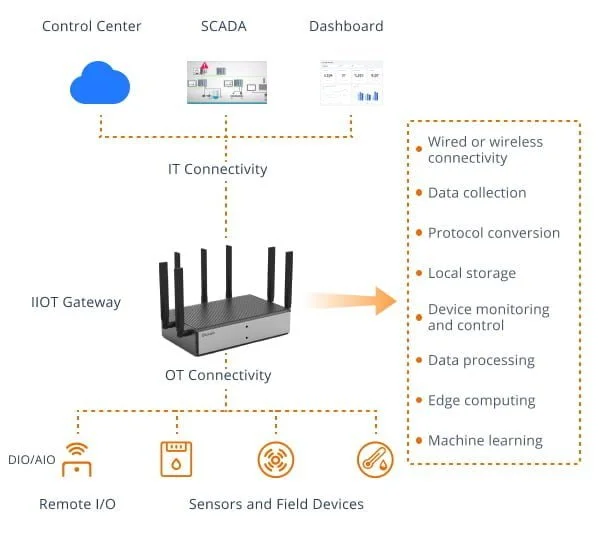
The KNX Gateway typically has multiple communication interfaces, such as KNX, IP, RS485, or wireless, allowing it to connect with different systems or devices. It understands the data structures, commands, and communication protocols of KNX and the target system, ensuring seamless communication and compatibility.
Through the KNX Gateway, users can control and monitor non-KNX devices or systems using KNX-compatible interfaces, such as switches, touch panels, or mobile apps. It enables the integration of diverse technologies into a unified building automation solution.
Importance of KNX Gateway
KNX gateways are extremely important to connect and control KNX and non-KNX devices. They help create efficient, integrated, and user-friendly building automation solutions. KNX Gateways provide centralized control and management of KNX devices. KNX Gateways enable the system to grow and adapt to changing needs and technological advancements, ensuring long-term viability.
Dusun IoT provides custom KNX Zigbee KNX CAN RS485/232 gateways for centralized control of industrial automation buildings. Its advanced features make it the ultimate choice for creating optimized, integrated, and user-friendly solutions.
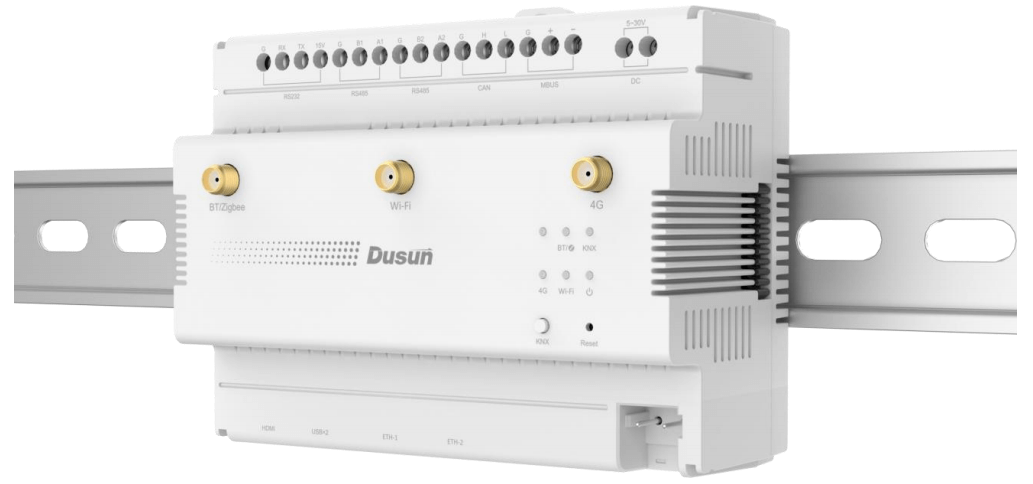
What Is KNX?
KNX (previously known as Konnex) is a standardized communication protocol specifically designed for building automation and control systems.
KNX: A standardized Communication Protocol
KNX is a standardized communication protocol for building automation. Some basic concepts of KNX are available below.
- Communication Medium: KNX supports multiple communication media (twisted pair, powerline, wireless), allowing flexibility in installation scenarios.
- Bus Topology: KNX uses a bus topology where devices are connected directly, eliminating the need for a central controller.
- Telegram Structure: Communication in KNX is based on telegrams, data packets carrying information between devices.
- Group Addressing: Devices in KNX are organized into groups using group addresses for targeted communication and simplified configuration.
- Bus Power Supply: KNX devices receive power directly from the bus line, reducing wiring complexity.
- Configuration and Programming: KNX systems are configured and programmed using the Engineering Tool Software (ETS), simplifying setup and maintenance.
Advantages of KNX
KNX offers several advantages contributing to its widespread adoption in the IoT-based building automation industry.
Interoperability
KNX is known for its excellent interoperability. Devices from diverse manufacturers that adhere to the KNX standard can seamlessly communicate and operate together. It allows for greater flexibility in choosing products from various vendors, avoiding vendor lock-in, and ensuring device compatibility.
Flexibility
KNX provides flexibility in system design and expansion. The protocol supports both small-scale residential installations and large-scale commercial projects. KNX devices can easily be added or removed without significantly disrupting the system. This scalability and flexibility make KNX suitable for various building types and sizes.
Wide Range of Applications
KNX can be used for various applications in building automation, thus allowing for comprehensive and integrated control of different building functions utilizing a single protocol.
Energy Efficiency
KNX supports energy-efficient building automation solutions. It enables intelligent control and optimization of energy-consuming systems, such as lighting and HVAC, leading to energy savings and improved sustainability. KNX can also integrate renewable energy sources and facilitate efficient energy management.
Reliability and Robustness
KNX is designed to provide a reliable and robust communication platform. It utilizes error-checking mechanisms and supports collision detection and prevention techniques, ensuring reliable data transmission. KNX devices are tested and certified to meet stringent quality standards, enhancing system reliability.
Easy Configuration and Maintenance
KNX systems are configured and programmed using the Engineering Tool Software (ETS). ETS provides a user-friendly interface for system setup, device configuration, and programming logic.
Versatile Integration: Connecting Diverse Devices with KNX
The versatility of KNX allows for the integration of diverse devices and systems, enabling a comprehensive and unified approach to building automation and control. Here are some examples:
- Lighting Control: KNX allows for integrating lighting systems, including dimming, switching, color, and scene control.
- Heating, Ventilation, and Air Conditioning (HVAC): KNX enables the integration of HVAC systems for temperature control, fan speed adjustment, and energy optimization.
- Shading and Blinds Control: KNX can integrate motorized shading and blinds systems, allowing for automated control based on sunlight, time, or user preferences.
- Security Systems: KNX can be integrated with security systems, such as alarms, access control, surveillance cameras, and motion sensors, enhancing building security.
- Energy Management: KNX facilitates energy monitoring, metering, and optimization by integrating energy meters, renewable energy sources, and load control devices.
- Audio-Visual Systems: KNX can integrate audio systems, video distribution, home theater controls, and multimedia devices, providing a centralized control solution.
- Fire and Safety Systems: KNX supports integrating fire detection systems, emergency lighting, evacuation systems, and smoke detectors for enhanced safety measures.
- Building Management Systems (BMS): KNX can integrate with centralized building management systems, enabling comprehensive control and monitoring of multiple systems within a building.
- Smart Home Devices: KNX is compatible with various smart home devices, creating a unified and interconnected ecosystem.
- Data Visualization and Control Interfaces: KNX can integrate with data visualization software, touch panels, mobile apps, and web interfaces, providing intuitive control and monitoring interfaces for users.
Dusun KNX CAN Gateway
The DSGW-081 i.MX6ull KNX Zigbee Gateway for Home Automation offers promising features. It is available in multiple variants supporting all popular communication protocols, including KNX. DSGW-081-6 KNX Zigbee RS485 gateway and other DSGW-081 variants are probably the perfect combination for your building and industrial automation systems . Here’s how it stands out as an ideal KNX gateway among competitors.
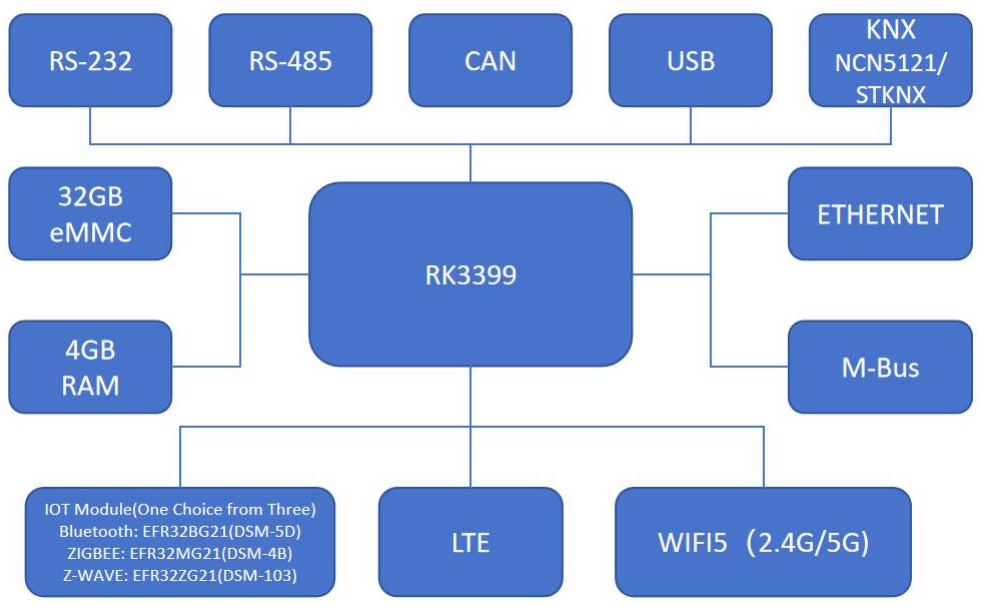
- KNX Support: The DSGW-081-6 model includes dedicated KNX support, facilitating seamless integration with KNX devices for building automation applications.
- Comprehensive Connectivity: With Ethernet, RS485, CAN, and I/O ports, the DSGW-081 enables smooth communication and data exchange between KNX devices and other industrial equipment.
- Powerful Edge Computing: The gateway’s edge computing capabilities allow for real-time analysis and optimization of KNX data, reducing reliance on cloud processing.
- Industrial-Grade Design: Built to withstand challenging environments, the DSGW-081 ensures reliability and durability in building automation settings.
- Easy Management and Deployment: Supporting SNMP and a cloud management platform, the gateway simplifies the configuration, monitoring, and maintenance of KNX devices at scale.
- Secure and Reliable Operation: The DSGW-081 prioritizes security, ensuring protected data transmission and the integrity of the KNX system.
Applications
The DSGW-081 i.MX6ull Industry Edge Computing Gateway can be applied in various industrial and building automation scenarios. Here are some examples:
- Industrial and Building Automation: The Dusun KNX gateway’s support for industrial protocols and interfaces, such as Ethernet/IP and Modbus, makes it suitable for industrial and building automation applications. It enables seamless integration with KNX devices, allowing for centralized control and monitoring of industrial equipment in manufacturing plants and industrial facilities.
- Smart City Infrastructure: The DSGW-081 can be deployed in smart city projects to enable efficient monitoring and control of urban infrastructure. It facilitates integrating and controlling KNX-based infrastructure elements, enabling efficient monitoring, optimization, and management of smart lighting, energy distribution, waste management, and other urban systems.
- Industrial IoT (IIoT): As a KNX gateway, the DSGW-081 bridges the gap between industrial devices and IoT networks. It integrates KNX devices with IoT platforms, thus implementing efficient IIoT solutions for improved productivity, monitoring, and maintenance in industrial environments.
- Edge Computing Applications: The DSGW-081’s support for KNX enhances its potential for edge computing applications. Enabling KNX devices at the network’s edge empowers real-time data processing, analysis, and decision-making.
KNX Gateway FAQs
How KNX gateway is different from the IoT gateway?
KNX gateways are designed for building automation applications, connecting and integrating devices that use the KNX communication protocol. They focus on wired communication protocols within the KNX ecosystem and are optimized for seamless interoperability. In contrast, IoT gateways have a broader application focus, supporting various IoT devices and protocols and enabling connectivity with diverse IoT ecosystems and platforms. They provide flexibility in communication options and bridge the gap between different devices and IoT platforms.
Does any gateway supports both KNX and IoT?
Yes, gateways are available that support both KNX and IoT protocols. By supporting KNX and IoT protocols, these gateways combine traditional KNX-based building automation systems with modern IoT technologies.
The DSGW-081 acts as a versatile gateway, allowing KNX-based building automation systems to connect with IoT platforms, enabling centralized management, data exchange, and automation across KNX and IoT devices.









